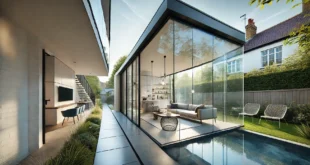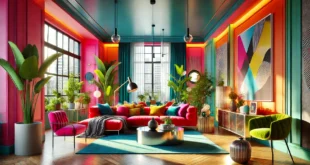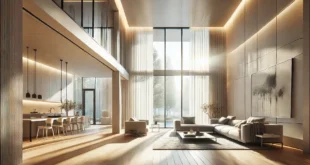
Welcome to the world of sustainable home design! As environmental awareness continues to grow, more homeowners and designers are shifting towards eco-friendly practices that not only reduce the carbon footprint but also create healthier, more cost-efficient living environments. If you are passionate about making a positive impact on the planet while enjoying a beautifully designed home, sustainable home design is the path forward. In this article, we will explore how you can transform your living spaces into eco-friendly havens through sustainable building practices, materials, and energy-efficient solutions.
As a professional home designer, I have seen firsthand how sustainable design can improve the quality of life for homeowners while supporting broader environmental goals. Whether you’re planning to build a new home from scratch or simply looking to renovate your current space, the principles of sustainability can be applied at every stage. From selecting renewable materials to integrating energy-efficient systems, every design decision you make can have a lasting positive impact on the environment and your daily life.
This comprehensive guide will walk you through the essentials of sustainable home design, covering everything from green building techniques to the benefits of energy-efficient homes. We will also delve into the financial advantages of eco-friendly homes and answer common questions that homeowners have when considering sustainable design. Our goal is to equip you with the knowledge and inspiration needed to make informed, environmentally responsible design choices. Let’s begin with an introduction to sustainable home design and why it’s becoming increasingly important in today’s world.
Introduction to Sustainable Home Design
What is Sustainable Home Design?
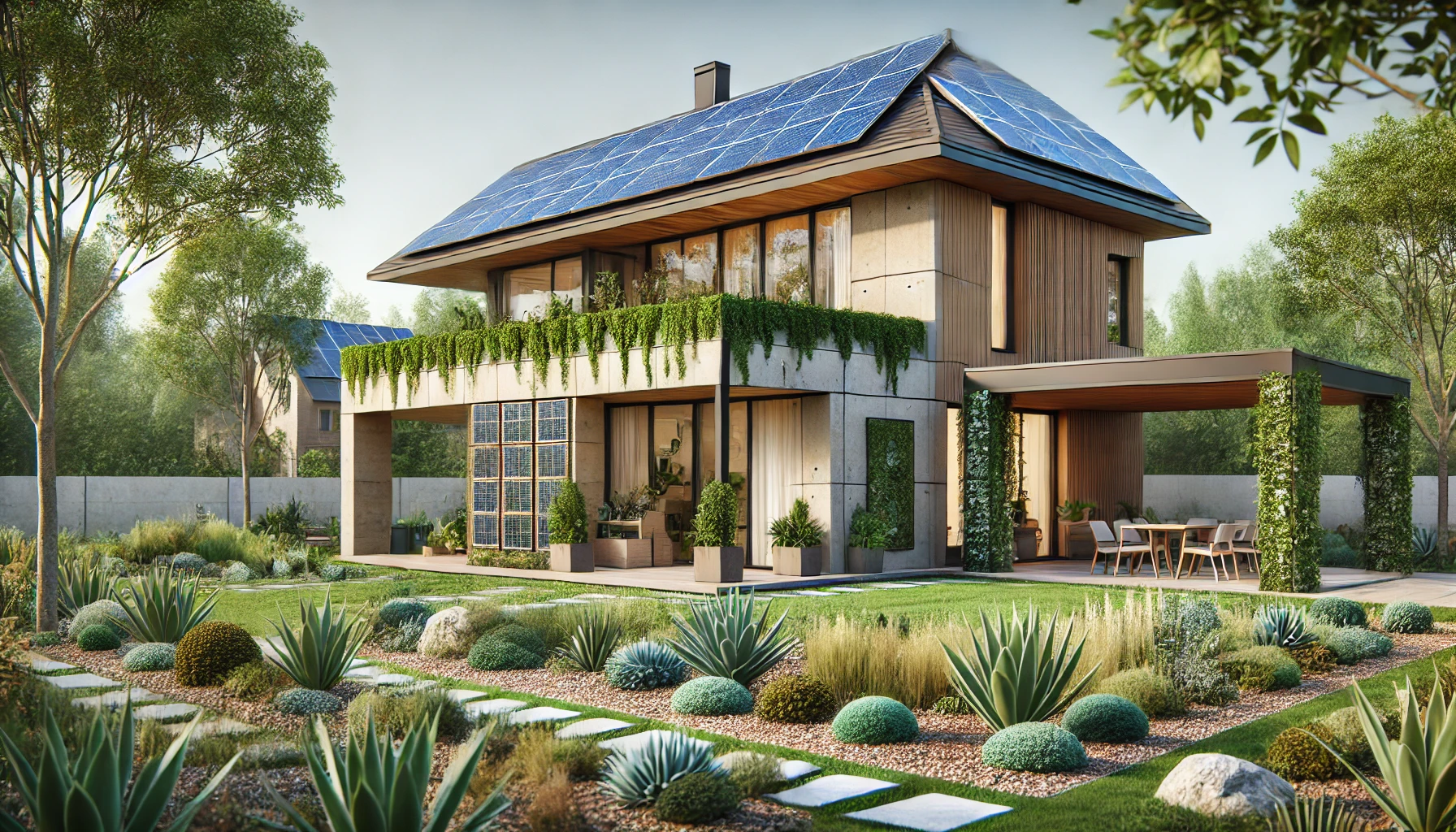
Sustainable home design refers to the practice of creating homes that are environmentally responsible, resource-efficient, and socially beneficial. This design approach encompasses the entire lifecycle of the home, from planning and construction to operation and eventual demolition or renovation. The aim is to minimize the home’s negative impact on the environment while maximizing energy efficiency, occupant comfort, and resource conservation.
Sustainable home design integrates principles such as energy efficiency, water conservation, indoor air quality, and the use of renewable and non-toxic materials. These homes are built to last, reducing the need for frequent repairs or replacements, which further supports environmental sustainability. By focusing on sustainability, homeowners can reduce energy consumption, lower utility bills, and contribute to the overall well-being of the planet.
The Growing Importance of Sustainability in Home Design
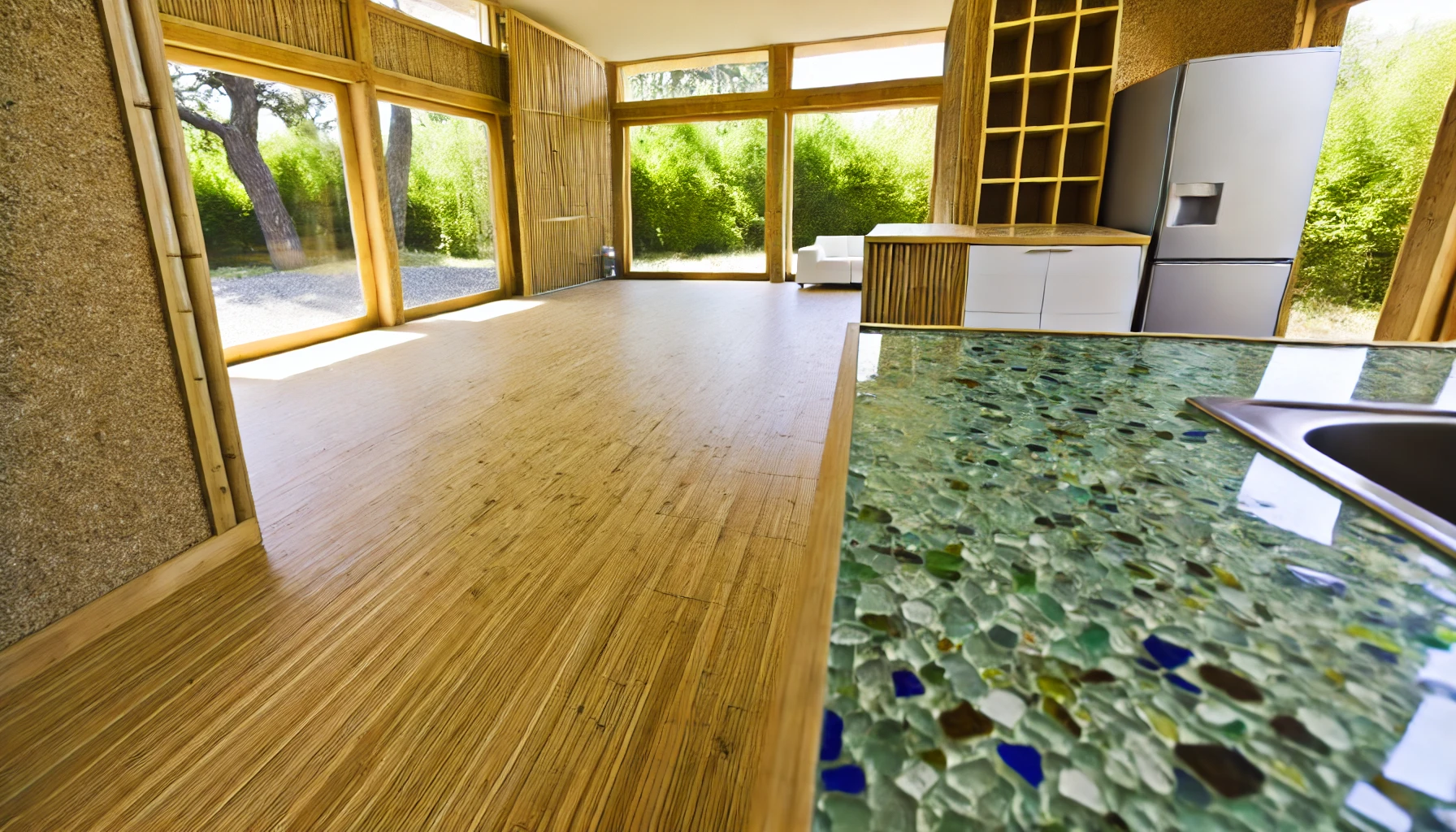
In recent years, sustainability has shifted from being a trend to a necessity in the field of home design. As climate change continues to pose significant threats, architects, designers, and homeowners alike are recognizing the need to reduce greenhouse gas emissions and minimize resource consumption. Governments and organizations worldwide are also implementing regulations and incentives to promote green building practices, further driving the demand for sustainable homes.
By adopting sustainable home design, you are not only contributing to the fight against climate change but also creating a healthier, more resilient living space. Sustainable homes are designed to withstand the challenges of a changing environment, from extreme weather events to resource shortages. As such, investing in sustainability ensures that your home remains functional and efficient in the long term.
Core Principles of Sustainable Home Design
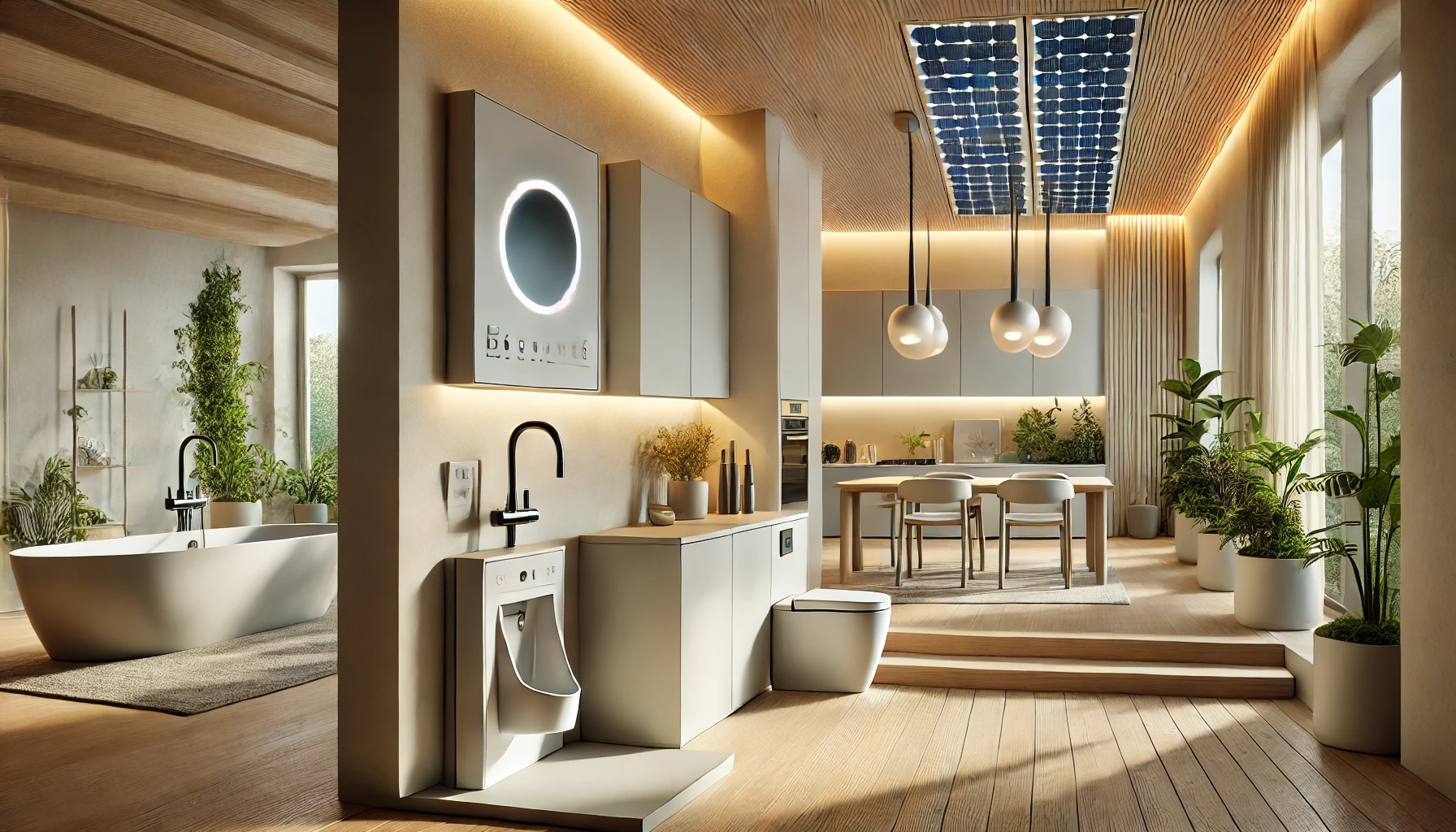
At the heart of sustainable home design are several core principles that guide the construction and operation of eco-friendly homes. These principles include energy efficiency, water conservation, indoor environmental quality, material selection, and waste reduction. Each of these elements plays a crucial role in creating a sustainable home that minimizes environmental impact and maximizes comfort and efficiency for its occupants.
Energy efficiency is one of the most important aspects of sustainable design. By incorporating energy-saving technologies, such as solar panels, LED lighting, and high-efficiency heating and cooling systems, homeowners can significantly reduce their energy consumption. Water conservation is another key focus, with sustainable homes often featuring water-saving fixtures, rainwater harvesting systems, and drought-resistant landscaping.
Choosing Eco-Friendly Building Materials
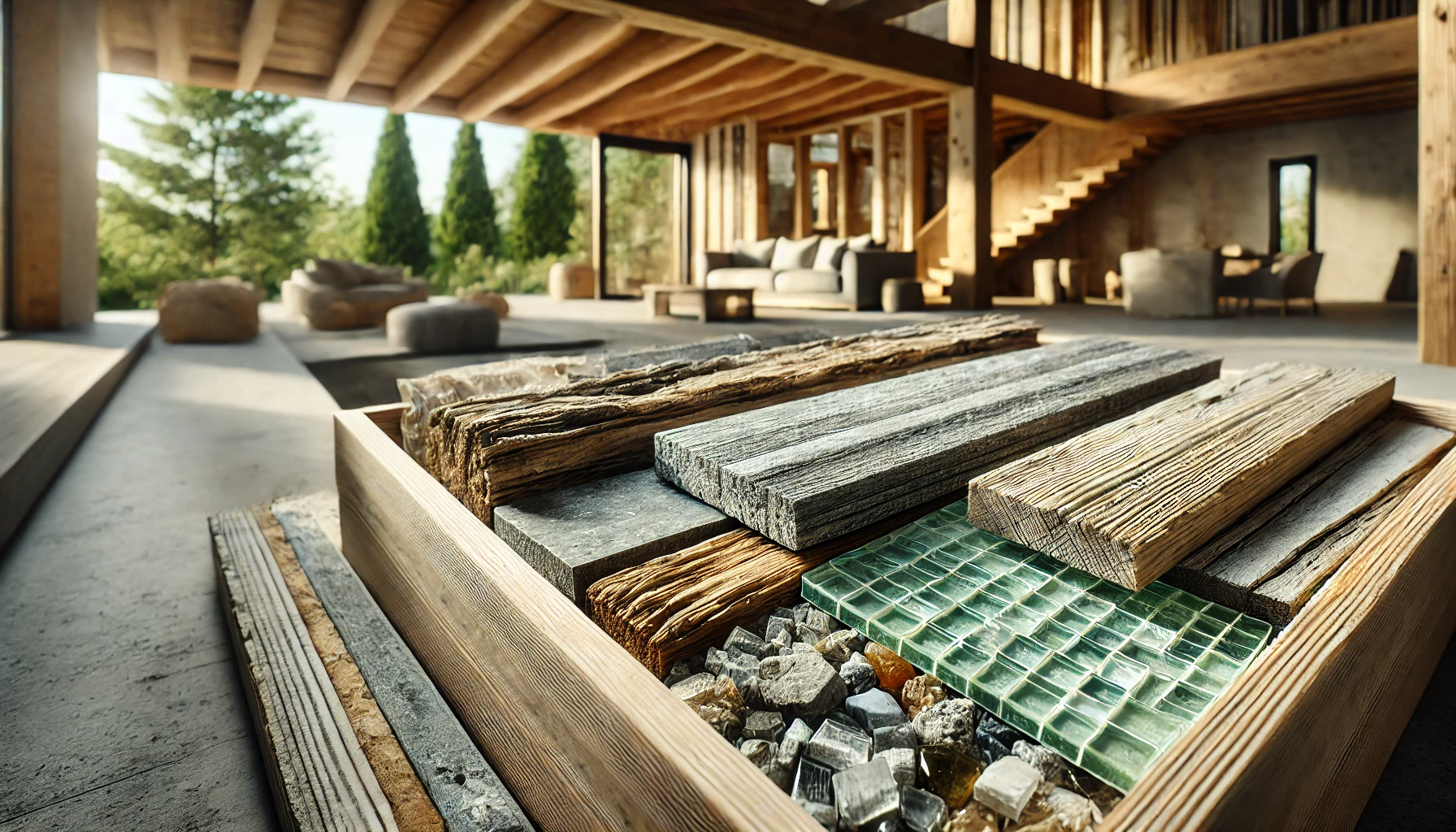
When it comes to sustainable home design, the choice of building materials is crucial. Eco-friendly materials are those that have minimal environmental impact, are renewable, and are often locally sourced. These materials can include recycled steel, reclaimed wood, bamboo, cork, and recycled glass. Using such materials not only reduces waste but also decreases the carbon footprint associated with transporting materials over long distances.
Non-toxic, low-VOC (Volatile Organic Compound) paints and finishes are also important considerations in sustainable design. These materials contribute to healthier indoor air quality, reducing the risk of respiratory problems and other health issues for occupants. By selecting eco-friendly materials, you are not only supporting sustainable building practices but also ensuring a healthier home for you and your family.
Designing for Energy Efficiency
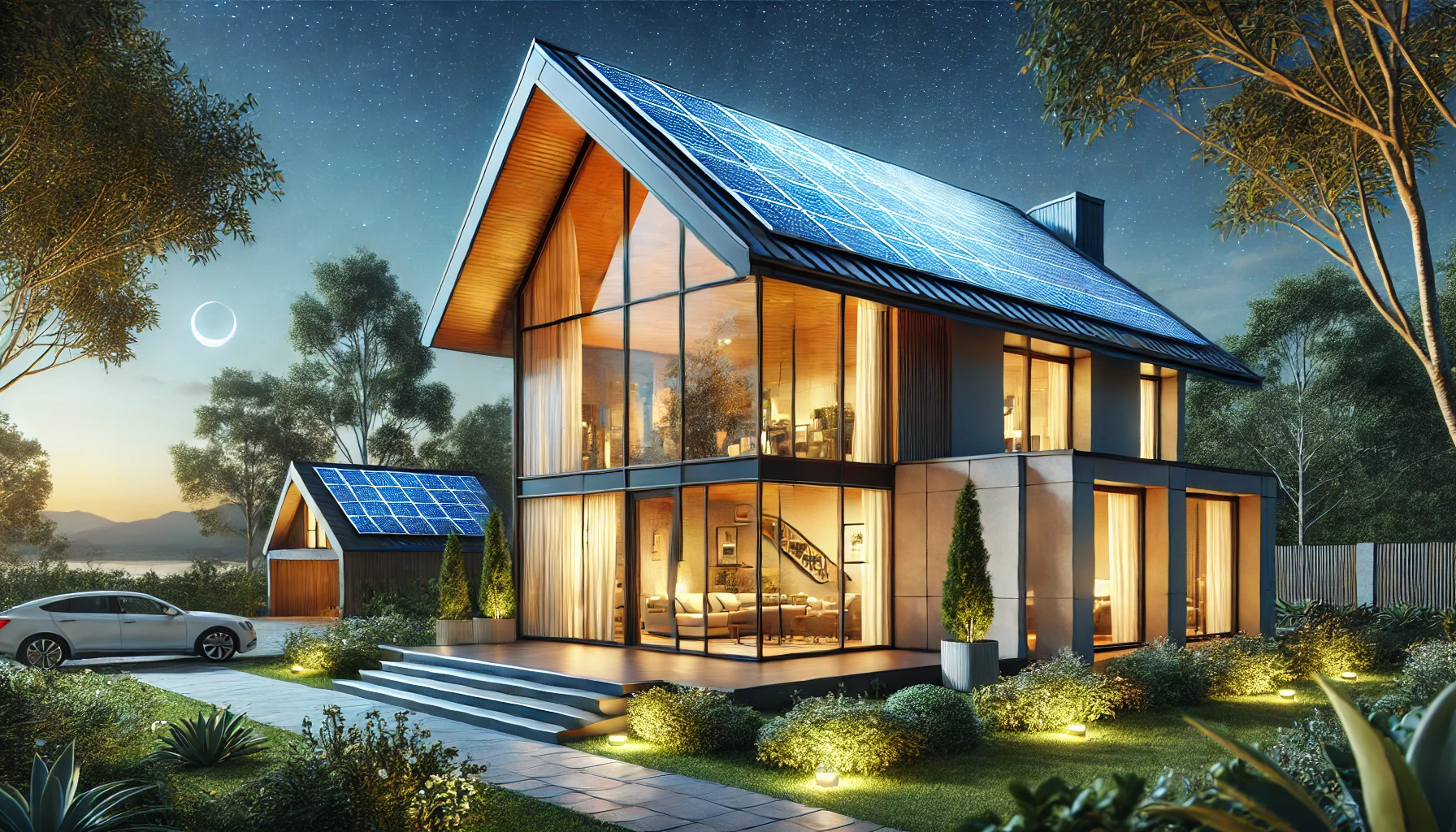
One of the main goals of sustainable home design is to create homes that consume less energy while maintaining or enhancing comfort levels. This can be achieved through a variety of design strategies, such as proper insulation, energy-efficient windows, and the use of passive solar design. Passive solar design refers to the strategic placement of windows, walls, and floors to collect, store, and distribute solar energy throughout the home.
In addition to passive solar design, sustainable homes often incorporate renewable energy systems, such as solar panels, wind turbines, or geothermal heating and cooling. These systems generate clean, renewable energy that reduces reliance on fossil fuels and lowers greenhouse gas emissions. By designing your home with energy efficiency in mind, you can significantly reduce your carbon footprint while enjoying lower energy bills.
Water Conservation Strategies
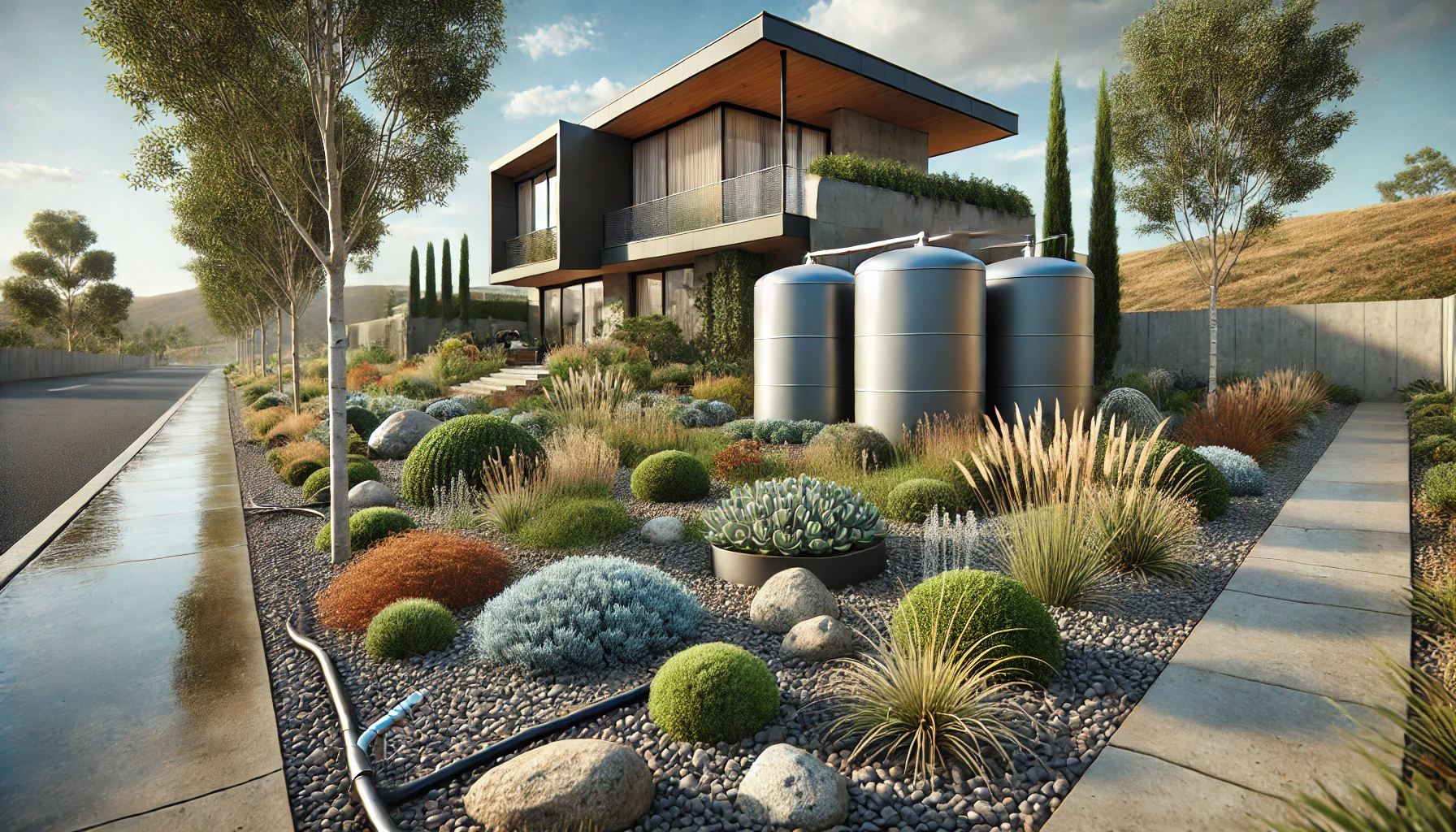
Water conservation is another key component of sustainable home design. With water shortages becoming more common in many parts of the world, designing homes that use water efficiently is critical. Low-flow toilets, faucets, and showerheads are simple yet effective ways to reduce water consumption. Rainwater harvesting systems and greywater recycling can also be integrated into the design to further conserve water resources.
In addition to conserving water indoors, sustainable landscaping practices can also help reduce water use. Xeriscaping, or landscaping with drought-tolerant plants, reduces the need for irrigation, while permeable paving materials allow rainwater to soak into the ground, replenishing local groundwater supplies. These strategies not only save water but also support the health of local ecosystems.
Indoor Air Quality and Sustainability

Indoor air quality is an often-overlooked aspect of sustainable home design, but it plays a significant role in the health and well-being of occupants. Poor indoor air quality can lead to a variety of health issues, including respiratory problems, allergies, and asthma. Sustainable homes are designed to promote healthy indoor air quality by using non-toxic materials, proper ventilation, and air filtration systems.
In addition to using low-VOC paints and finishes, sustainable homes often feature natural ventilation systems, such as operable windows, skylights, and mechanical ventilation with heat recovery. These systems help maintain fresh air circulation throughout the home while minimizing energy use. By prioritizing indoor air quality, sustainable home design creates healthier living environments for occupants.
Advantages of Sustainable Home Design
Energy Savings and Lower Utility Bills
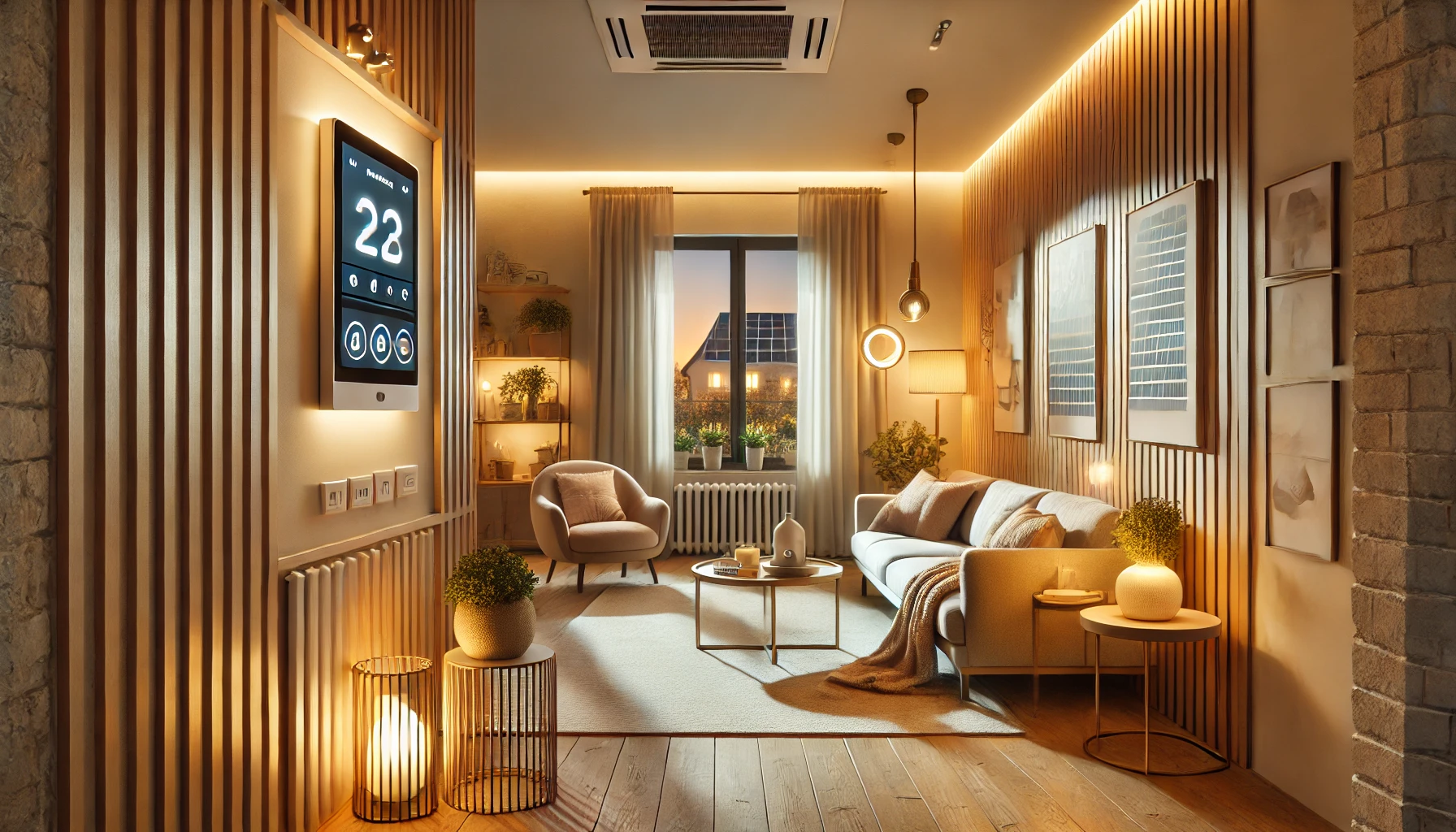
One of the most significant advantages of sustainable home design is the potential for energy savings. By incorporating energy-efficient technologies and design strategies, homeowners can significantly reduce their energy consumption and, in turn, lower their utility bills. For example, installing solar panels can provide a renewable source of electricity that offsets the cost of traditional energy sources, while proper insulation and energy-efficient windows can reduce heating and cooling costs.
In the long term, these energy savings can offset the initial investment in sustainable technologies, making sustainable homes more cost-effective over time. As energy costs continue to rise, the financial benefits of sustainable home design will only increase, making it a smart choice for environmentally conscious homeowners looking to save money.
Improved Health and Well-Being
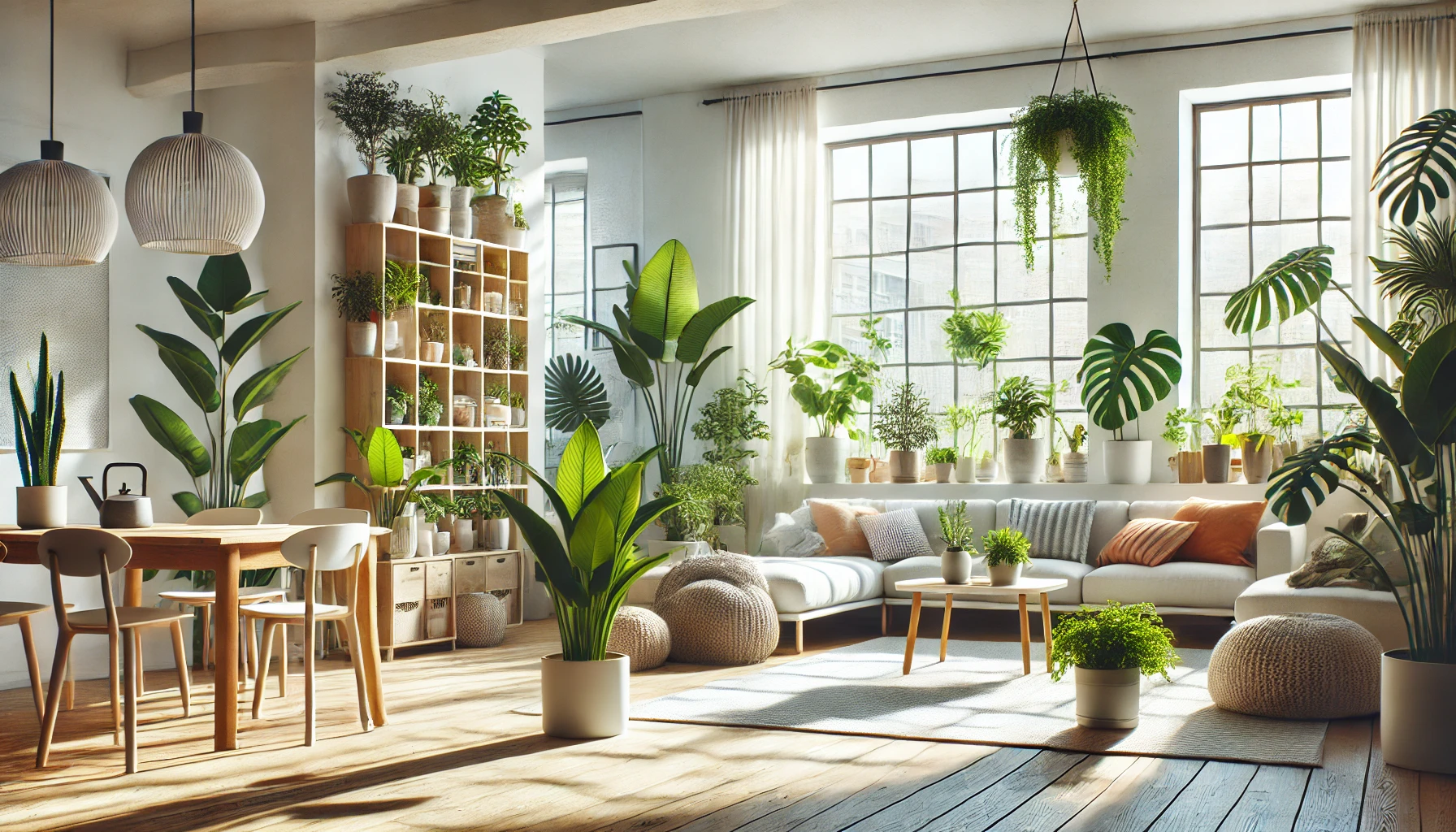
Sustainable home design prioritizes the health and well-being of occupants by promoting indoor air quality, natural lighting, and the use of non-toxic materials. Homes that are designed with sustainability in mind are free from harmful chemicals, such as VOCs, that can contribute to respiratory issues and other health problems. Additionally, sustainable homes often feature ample natural light, which has been shown to improve mood, productivity, and overall well-being.
Natural ventilation and air filtration systems also help reduce the risk of indoor air pollution, creating a healthier environment for you and your family. By designing your home with sustainability in mind, you can create a living space that supports both your physical and mental health.
Frequently Asked Questions About Sustainable Home Design
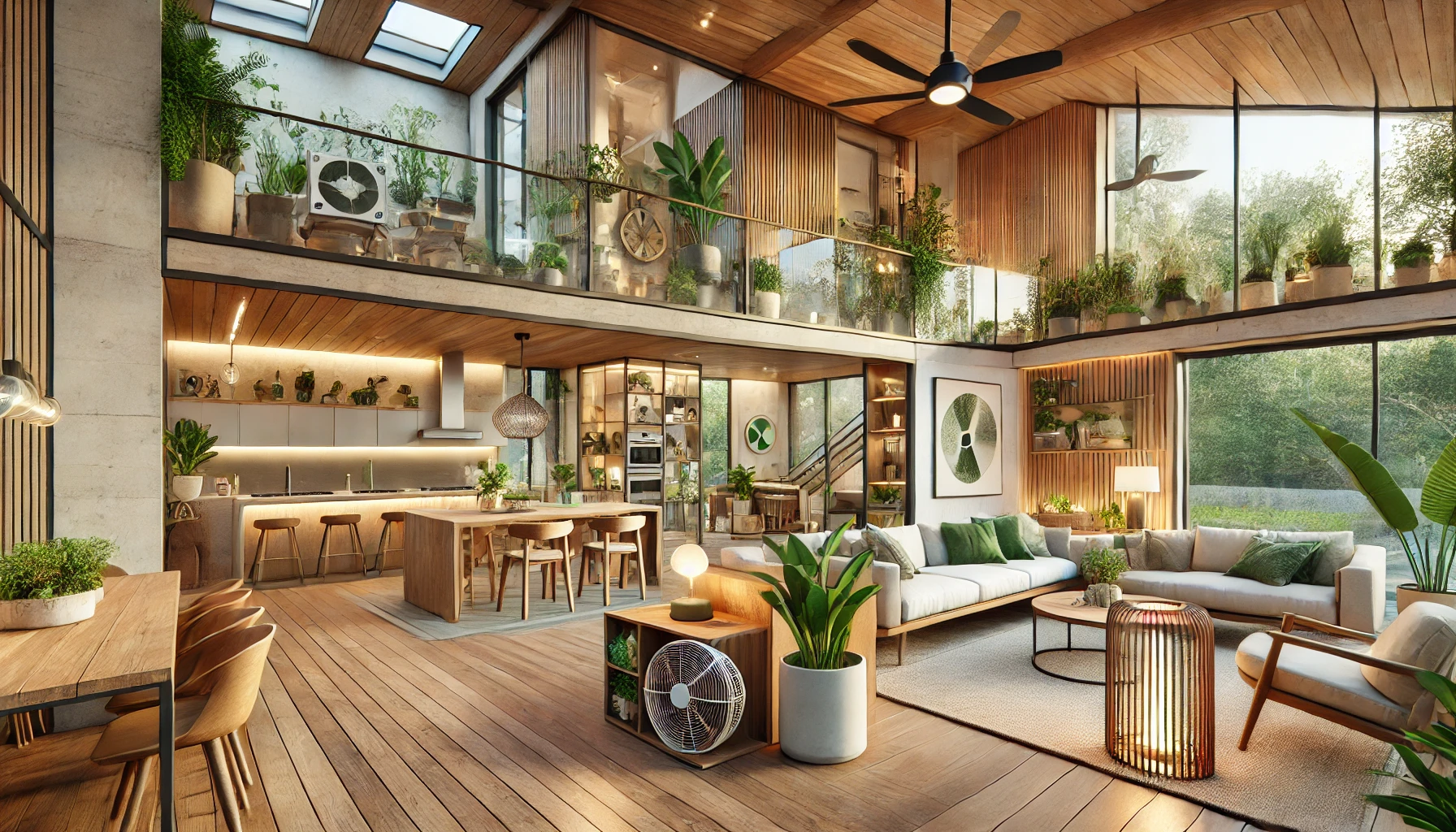
What is Sustainable Home Design?
Sustainable home design refers to the practice of creating homes that minimize environmental impact and maximize energy efficiency, resource conservation, and occupant comfort. It involves the use of eco-friendly materials, energy-efficient technologies, and design strategies that reduce the home’s carbon footprint.
How Can I Make My Home More Sustainable?
You can make your home more sustainable by incorporating energy-efficient technologies, using eco-friendly building materials, and implementing water conservation strategies. Simple steps like installing solar panels, upgrading to energy-efficient windows, and using low-flow plumbing fixtures can have a significant impact on your home’s sustainability.
What are the Benefits of Sustainable Home Design?
The benefits of sustainable home design include reduced energy consumption, lower utility bills, improved indoor air quality, and a reduced environmental footprint. Sustainable homes are also healthier for occupants, as they are free from harmful chemicals and promote natural light and ventilation.
Conclusion
Sustainable home design is not only about protecting the environment but also about creating healthier, more comfortable, and cost-effective living spaces. By incorporating energy-efficient technologies, eco-friendly materials, and water conservation strategies, you can reduce your home’s environmental impact while enjoying the benefits of lower utility bills and improved well-being.
Closing Words
Thank you for taking the time to explore the world of sustainable home design with us. We hope this article has provided valuable insights and inspiration for your next project. Sustainable design is the future, and by adopting eco-friendly practices in your home, you can make a positive impact on the planet while enhancing your quality of life.
 Home Designing Get expert home decor tips and design inspiration at HomeDesigning.blog. Transform your living spaces with trending styles and DIY ideas!
Home Designing Get expert home decor tips and design inspiration at HomeDesigning.blog. Transform your living spaces with trending styles and DIY ideas!
